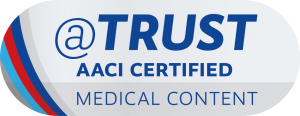National Mesothelioma Virtual Bank
The National Mesothelioma Virtual Bank (NMVB) supports research by collecting and distributing biospecimens donated by mesothelioma patients. Without organizations like the NMVB, many researchers would never have the opportunity to directly study this rare disease.
What Is the National Mesothelioma Virtual Bank?
The University of Pittsburgh founded the National Mesothelioma Virtual Bank in 2006. A Centers for Disease Control grant helped the Pittsburg School of Medicine open it. The National Institute for Occupational Safety and Health also played a role.
Since then, the bank has added more than 1,400 annotated cases to its database. Its inventory has grown to more than 1,700 biospecimens.
The NMVB aims to support research that will benefit mesothelioma patients and treatment specialists. It aids the discovery of new preventative measures, helping uncover therapeutic interventions. Their work helps move science closer to a cure for mesothelioma. It links data associated with specimens collected and stored at five different institutions.
Advances in research depend on the ability of all researchers to access high-quality samples—meaningful and well-characterized annotated data matters. The founders of the virtual tissue bank understood this well.
Our goal is to provide the most comprehensive resource we can to go after this dreaded disease. We’re proud to share the work. We want to be a national model and a tissue-banking leader.
Pittsburgh’s Biomedical Informatics Department already had expertise in cancer research. It is a leader in research for prostate, colorectal and pancreatic cancers.
The NMVB’s funding was renewed in 2011 and again in 2016, allowing it to plan for the long term.
Access top doctors, and get help scheduling appointments.
Connect NowDr. Jacques Fontaine, Pleural Mesothelioma Specialist

How the Mesothelioma Tissue Bank Works
Researchers can access the virtual bank’s database online to see what is available and determine whether it has the specimens needed for a particular research study. The inventory categories include specimen availability, demographics, staging and vital status.
- Paraffin-embedded tissue
- Fresh frozen tissue
- Tissue microarrays (TMAs)
- Blood samples
- Genomic DNA
There is a set of 132 common data elements to maintain consistency between samples regardless of where they are stored or their origin site. Search fields include histopathologic grade and type, stage of disease, availability of normal tissue, treatment received and metastasis and recurrence information.
The NMVB hopes to appeal to researchers at every level and discipline. From the high-powered scientist to the graduate student doing their thesis paper, they believe the next significant breakthrough could come from anywhere.
A 2021 study called SPaRTAN investigated the potential of a computational framework for linking cell-surface receptors to transcriptional regulators. The researchers used fresh tissue samples and tumor specimens from the NMVB, without which the study would not have been possible.
We provide enough information for investigators to peruse the field so their imaginations take over. Our hope is that students, scientists, PhD candidates can all look at the information, and say ‘I wonder….’ What we have could become a springboard. We’re looking for the next ‘Ah-Ha!’ moment.
The bank’s resources are available to academic researchers and commercial organizations conducting evaluations of prognostic or diagnostic studies. To request access to biospecimens and associated datasets, a research team must submit a letter of intent to the NVMB research evaluation panel.
Recommended Reading






